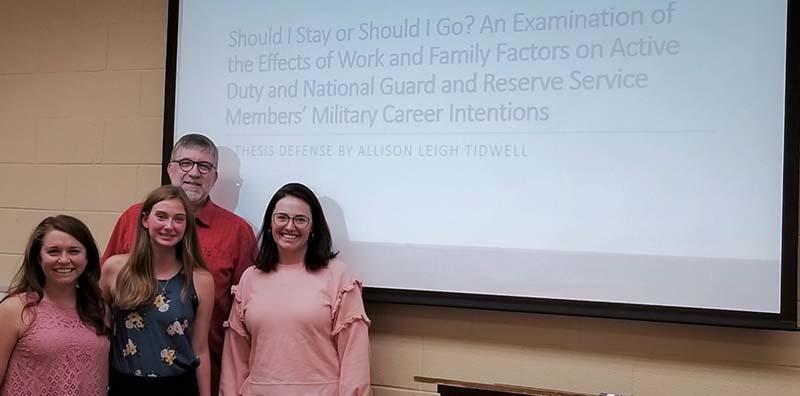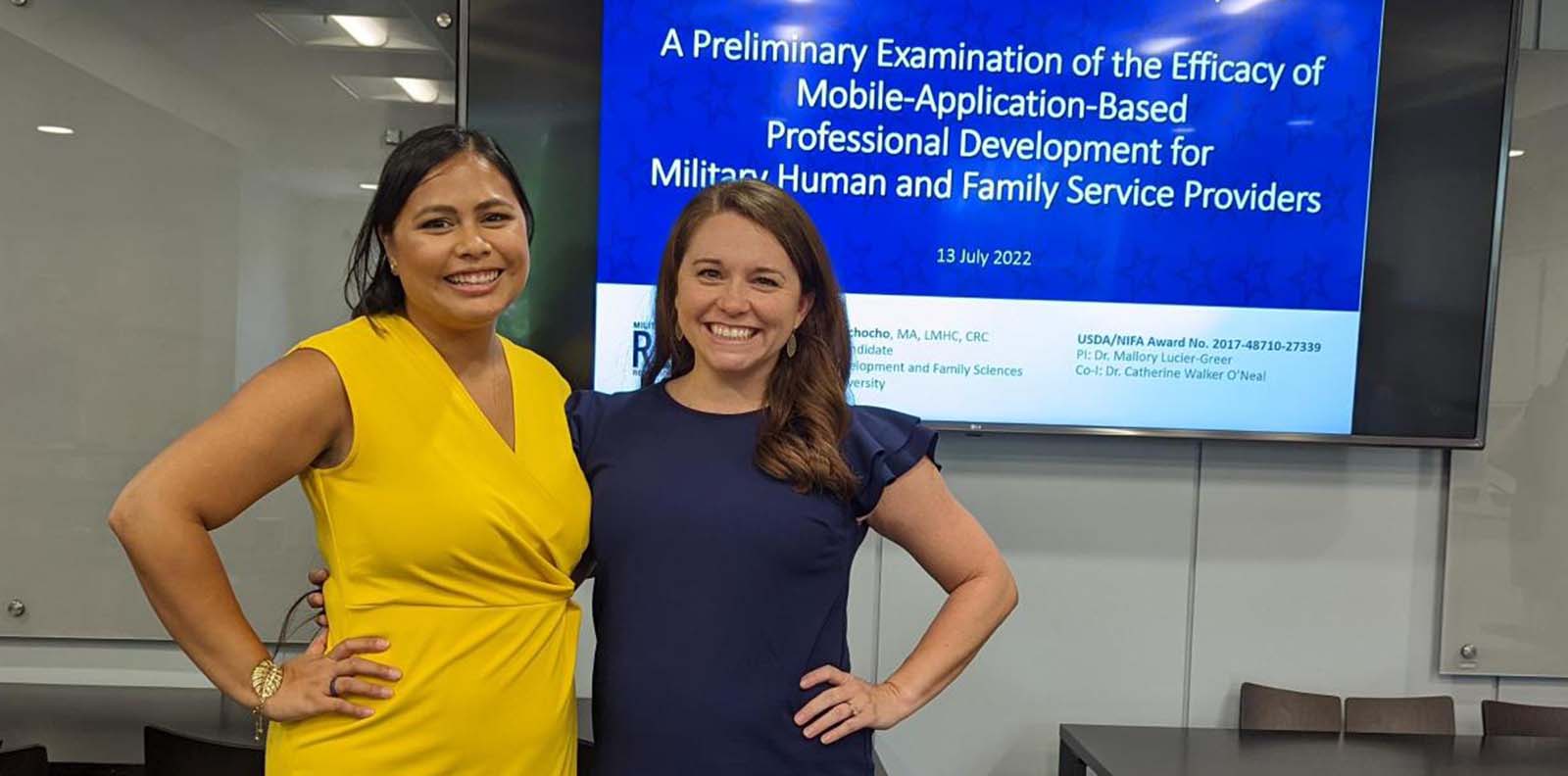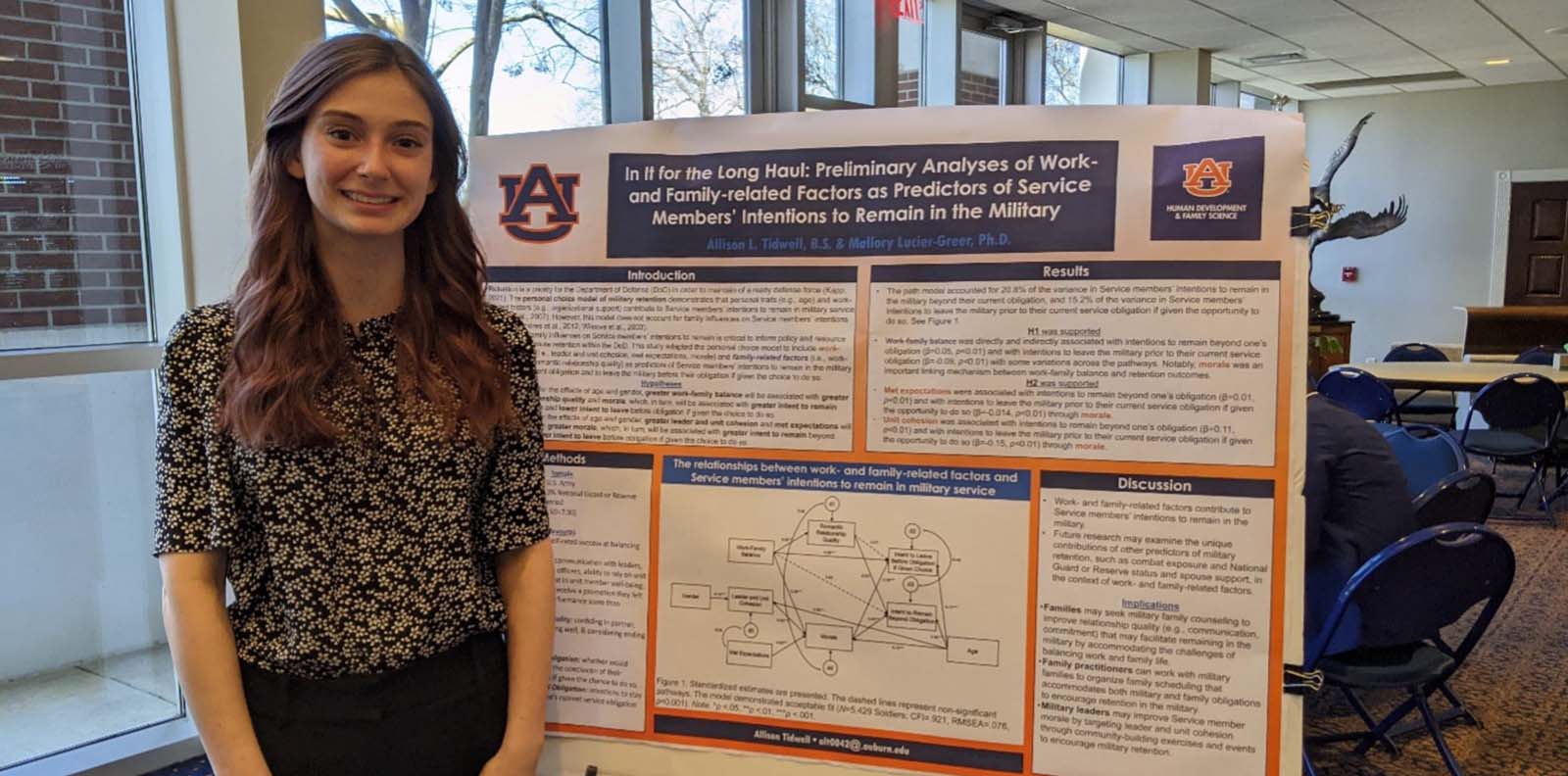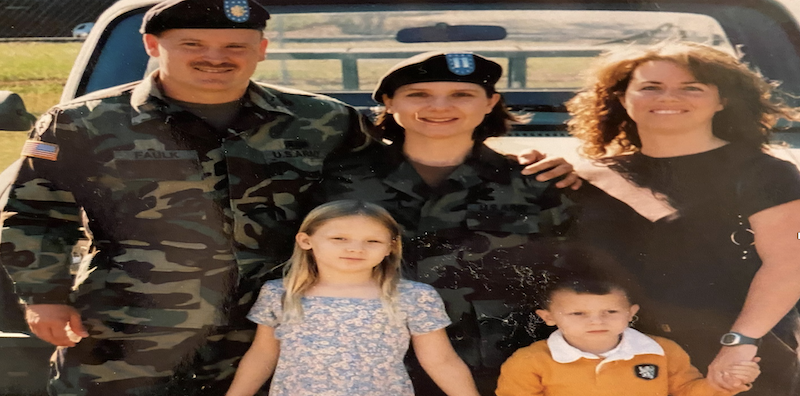Objective This study seeks to advance the literature by disentangling the effects of deployment-acquired traumatic brain injury (TBI) from comorbid postconcussive symptoms and PTSD symptoms on relationship distress. Background Because TBI poses challenges to military marriages, understanding the predictors of relationship distress after TBI is important for helping service members cope with the effects of the injury. Method Survey data from the U.S. Army STARRS Pre–Post Deployment Study, collected from 2,585 married service members before and after a combat deployment to Afghanistan, evaluated predictors of relationship distress 9 months after homecoming. Results Deployment-acquired TBI corresponded with more relationship distress controlling for predeployment brain health, but its predictive power was eclipsed by concurrent postconcussive symptoms and concurrent PTSD symptoms. Concurrent PTSD symptoms accounted for twice as much variance in relationship distress than concurrent postconcussive symptoms. Conclusion Targeting and treating comorbid conditions may be essential for supporting military marriages after TBI. Implications: Military command, policymakers, and medical professionals may find value in broadening support services for TBI to include resources addressing postconcussive symptoms, PTSD symptoms, and relationship distress.
Library (1781)
Dictionary (741)
Research in Action (104)
Featured News (57)
Showing library results for: ALL
Filters: Research Summary
1 - 20 of 17811 Traumatic brain injury and relationship distress during military deployment and reunion
APA Citation:
Knobloch, L. K., & Abendschein, B. (2024). Traumatic brain injury and relationship distress during military deployment and reunion. Family Relations, 73(1), 424-440. https://doi.org/10.1111/fare.12849
Focus:
Trauma
Deployment
Mental health
Couples
Physical health
Branch of Service:
Army
Military Affiliation:
Active Duty
Population:
Adulthood (18 yrs & older)
Young adulthood (18 - 29 yrs)
Thirties (30 - 39 yrs)
Middle age (40 - 64 yrs)
2 “I’ve seen what evil men do”: Military mothering and children’s outdoor risky play
APA Citation:
Bauer, M. E. E., Giles, A. R., & Brussoni, M. (2024). 'I’ve seen what evil men do’: Military mothering and children’s outdoor risky play. Leisure Sciences, 46(2), 150-166. https://doi.org/10.1080/01490400.2021.1920521
Focus:
Children
Parents
Branch of Service:
International Military
Military Affiliation:
Active Duty
Population:
Adulthood (18 yrs & older)
Thirties (30 - 39 yrs)
Middle age (40 - 64 yrs)
Authors: Bauer, Michelle E. E.; Giles, Audrey R.; Brussoni, Mariana
Year: 2024
Abstract
The restrictions on children’s outdoor risky play is emerging as a pressing public health concern. To the best of our knowledge, no research has examined military mothers’ perspectives on outdoor risky play. Military mothers have unique knowledge of war and combat and potential threats to children’s safety due to their communications with their partners in combat arms occupations. Their perspectives on outdoor risky play are important to consider to expand scholarly understandings of risk discourses in the context of military culture. We conducted semi-structured interviews with 16 military mothers from across Canada. The results of our reflexive thematic analysis are threefold: (1) Outdoor risky play in close physical proximity to strangers and cars is dangerous for children; (2) outdoor risky play should not result in children experiencing serious injuries; and (3) outdoor risky play can teach children to assess and manage risks.
3 Veteran caretaker perspectives of the need for childcare assistance during health care appointments
APA Citation:
Shepherd-Banigan, M., Cannedy, S., Rodriguez, A. N., Burns, M., Woolson, S., Hamilton, A., Quiroz, I., Matthews, H., Garber-Cardwell, D., Byrd, K. G., Brown, A., & Goldstein, K. M. (2024). Veteran caretaker perspectives of the need for childcare assistance during health care appointments. Women's Health Issues, 34(1), 98-106. https://doi.org/10.1016/j.whi.2023.08.005
Focus:
Veterans
Programming
Branch of Service:
Multiple branches
Military Affiliation:
Veteran
Population:
Adulthood (18 yrs & older)
Young adulthood (18 - 29 yrs)
Thirties (30 - 39 yrs)
Middle age (40 - 64 yrs)
Authors: Shepherd-Banigan, Megan; Cannedy, Shay; Rodriguez, Adelmira N.; Burns, Madison; Woolson, Sandra; Hamilton, Alison; Quiroz, Ismael; Matthews, Hanh; Garber-Cardwell, Diane; Byrd, Kaileigh G.; Brown, Adrian; Goldstein, Karen M.
Year: 2024
Abstract
Purpose In 2020, Congress passed legislation to establish the national Veterans Child Care Assistance Program (VCAP) targeting eligible veterans receiving care through the Veterans Health Administration (VA). This needs assessment describes the childcare needs of veteran caretakers of young children and explores the implications of inadequate childcare on health care engagement. Methods Survey data were collected from 2,000 VA users with dependent children; data were analyzed using standard descriptive statistics. Qualitative data were collected from 19 veterans through focus groups and analyzed using rapid thematic analysis. Findings More than 75% of veterans surveyed indicated that they required childcare assistance during health care appointments and 73% reported barriers to finding childcare. Prominent barriers included the high cost of childcare and not having a trusted source of childcare. Nearly 58% of survey respondents reported missed or canceled VA health care appointments due to childcare challenges. Furthermore, 35% of surveyed veterans reported that their children had accompanied them to an appointment in the past year. Among these veterans, 59% brought their children into the exam room. Focus group participants discussed how having children present during their health care appointments hampered communication with health care providers. Conclusions Veterans report that lack of childcare keeps them from attending and remaining focused on the provider during their health care visits, which could compromise quality of care. As one of the only health systems in the United States that will offer childcare assistance, VCAP presents an opportunity to improve health care access and quality by reducing missed appointments and suboptimal care.
4 A peer veteran approach to the caring letters suicide prevention program: Preliminary data
APA Citation:
Livingston, W. S., Carter, S. P., Leitner, R., Ton, A. T., Gebhardt, H., Zoellner, L. A., Mizik, N., Rojas, S. M., Buchholz, J. R., & Reger, M. A. (2024). A peer veteran approach to the caring letters suicide prevention program: Preliminary data. Psychological Services, 21(1), 1–12. https://doi.org/10.1037/ser0000760
Focus:
Veterans
Programming
Mental health
Branch of Service:
Multiple branches
Air Force
Army
Navy
Marine Corps
Coast Guard
Military Affiliation:
Veteran
Reserve
Population:
Adulthood (18 yrs & older)
Young adulthood (18 - 29 yrs)
Thirties (30 - 39 yrs)
Middle age (40 - 64 yrs)
Authors: Livingston, Whitney S.; Carter, Sarah P.; Leitner, Rebecca; Ton, Andrew T.; Gebhardt, Heather; Zoellner, Lori A.; Mizik, Natalie; Rojas, Sasha M.; Buchholz, Jonathan R.; Reger, Mark A.
Year: 2024
Abstract
Caring Letters is a prevention program aimed at reducing suicide risk; however, clinical trials indicate mixed results among military and veteran samples. The present study aimed to pilot a new version of the Caring Letters intervention that was adapted to military culture in order to emphasize peer support. The supportive letters, traditionally sent from clinicians, were written by peer veterans (PVs) who volunteered from local Veteran Service Organizations (VSOs). PVs (n = 15) attended a 4-hr workshop to learn about Caring Letters and write six letters to a veteran with a recent hospitalization for suicide risk (hospitalized veterans [HVs]; n = 15 completed a baseline assessment). Letters from PVs were sent to HVs once a month for 6 months following discharge from the psychiatric inpatient unit. The study used a limited efficacy approach to examine feasibility outcomes including implementation procedures, participant recruitment and retention rates, and barriers and facilitators. Acceptability measures examined HV satisfaction, perceived privacy and safety, and PV workshop satisfaction. Among HVs, results suggested that suicidal ideation improved from baseline to follow-up (g = 3.19). Results suggested resilience scores improved among HVs (g = 0.99). Results also suggested a possible reduction in stigma associated with mental health treatment among PVs at 1-month postworkshop assessment. Interpretation of the results is limited by the design and sample size, but the results provide preliminary support for the feasibility and acceptability of a PV approach to Caring Letters. (PsycInfo Database Record (c) 2023 APA, all rights reserved)
APA Citation:
Zhang, N., Zhang, J., Gewirtz, A. H., & Deater-Deckard, K. (2024). Linking observing and nonreactivity mindfulness to parenting: Moderated direct and indirect effects via inhibitory control. Journal of Family Psychology, 38(1), 71–81. https://doi.org/10.1037/fam0001152
Focus:
Parents
Children
Branch of Service:
Multiple branches
Military Affiliation:
Active Duty
Population:
Childhood (birth - 12 yrs)
Preschool age (2 -5 yrs)
School age (6 - 12 yrs)
Adolescence (13 - 17 yrs)
Authors: Zhang, Na; Zhang, Jingchen; Gewirtz, Abigail H.; Deater-Deckard, Kirby
Year: 2024
Abstract
To disentangle the effects of key dimensions of dispositional mindfulness on parenting, the present study tests the hypotheses that parental Nonreactivity moderates the association between Observing and effective parenting behaviors, and that parental inhibitory control mediates the relationship between Observing and parenting depending on levels of Nonreactivity. The sample consists of 294 fathers (95.9% deployed) and 313 mothers (81.5% nondeployed) from 336 military families with a child aged between 4 and 13 years at baseline. Parents reported Observing and Nonreactivity at baseline using the Five Facet Mindfulness Questionnaire and completed a computerized Go/No-Go task for assessing inhibitory control at baseline and 1-year follow-up. Families completed a series of in-home interaction tasks at baseline and 2-year follow-up, and effective parenting behaviors were observed and coded using a theory-driven, empirically validated coding system. Results showed that when fathers reported low Nonreactivity, the association between Observing and effective parenting behaviors 2 years later was negative, but this association became positive when fathers reported high Nonreactivity. Fathers’ Observing was associated with decreased inhibitory control 1 year later when they reported low (vs. high) Nonreactivity, whereas mothers’ Observing was associated with increased inhibitory control 1 year later when they reported high (vs. low) Nonreactivity. The hypothesized effect of inhibitory control as a mediator was not found. Understanding specificity in the effects of dispositional mindfulness dimensions on parenting behaviors will drive effective and efficient designs of mindful parenting interventions. Future research should use dismantling experimental designs to test the synergistic effects of Observing and Nonreactivity in parents. (PsycInfo Database Record (c) 2023 APA, all rights reserved)
6 Gender role reversal: Civilian husbands of U.S. military servicewomen as tied-migrant workers
APA Citation:
Dowling, L. E., Jackson, J. B., & Landers, A. L. (2024). Gender role reversal: Civilian husbands of U.S. military servicewomen as tied-migrant workers. Family Relations, 73(1), 441-465. https://doi.org/10.1111/fare.12936
Focus:
Mental health
Other
Branch of Service:
Multiple branches
Army
Marine Corps
Air Force
Navy
Military Affiliation:
Active Duty
Population:
Adulthood (18 yrs & older)
Young adulthood (18 - 29 yrs)
Thirties (30 - 39 yrs)
Middle age (40 - 64 yrs)
Authors: Dowling, L. Emily; Jackson, Jeffrey B.; Landers, Ashley L.
Year: 2024
Abstract
Objective This qualitative study examined the experiences of male spouses of female service members in the U.S. military (civilian husbands of servicewomen) in their positions as tied-migrant workers. Background Employment of civilian husbands of servicewomen is frequently affected when they geographically relocate due to their wives' military service. Because societal norms for husbands as primary breadwinners in marriages persist and the majority of military couples consist of male service members married to female civilian spouses, civilian husbands of servicewomen may experience a gender role reversal in their identities as a spouse and as a provider within their relationships and military culture. Method Semistructured interviews were conducted with 22 civilian husbands who experienced at least one geographic relocation due to their wife's military service. Descriptive phenomenological analysis was used to discover the essence of participants' experiences. Results Themes around defining masculinity, minority experiences in the military, and nontraditional gender provider roles as tied-migrant workers emerged. Participants experienced a gender role reversal as tied-migrant workers and as military spouses, and they had some difficulties integrating into military communities. Participants expanded their masculine identities to include performing traditionally feminine tasks and valuing egalitarianism in their spousal relationships when they experienced barriers to breadwinning. Conclusion Findings indicated the importance of emotional support as civilian husbands navigate their masculine identities and relationships both with spouses and as gender minorities in their communities. Implications Clinical recommendations for psychotherapists are provided with an emphasis on using emotionally focused therapy with couples consisting of civilian husbands and servicewomen.
APA Citation:
Blankenship, A. E., Drew, A. L., Jacoby, V. M., Zolinski, S. K., Ojeda, A. R., Dondanville, K. A., Sharrieff, A.-F. M., … DeVoe, E. R. (2024). Qualitative examination of homecoming experiences among active-duty military fathers during reintegration. Qualitative Social Work, 23(2), 298-313. https://doi.org/10.1177/14733250221150378
Focus:
Deployment
Children
Couples
Branch of Service:
Multiple branches
Military Affiliation:
Active Duty
Population:
Childhood (birth - 12 yrs)
Adulthood (18 yrs & older)
Young adulthood (18 - 29 yrs)
Thirties (30 - 39 yrs)
Middle age (40 - 64 yrs)
Authors: Blankenship, Abby E.; Drew, Alison L.; Jacoby, Vanessa M.; Zolinski, Sophie K.; Ojeda, Alyssa R.; Dondanville, Katherine A.; Sharrieff, Allah-Fard M.; Yarvis, Jeffrey; Acker, Michelle; Blount, Tabatha H.; McGeary, Cindy A.; Young-McCaughan, Stacey; Peterson, Alan L.; Kritikos, Tessa K.; DeVoe, Ellen R.
Year: 2024
Abstract
Active-duty military fathers are frequently away from their families throughout their military career and are faced with readjusting to family and garrison life after each separation. For fathers of very young children, reintegration can have unique challenges due to the tremendous developmental progression occurring in early childhood and the impact of lengthy deployment separations. While much of the research on military families focuses on extreme negative experiences (e.g., reactions to war injuries and posttraumatic stress disorder), little is known about the common experiences of military families. This qualitative study explores the reintegration experiences of 15 active-duty U.S. Army fathers with a child under six in their home during the deployment. Homecoming experiences were coded and analyzed to distinguish four adjustment factors and five adaptation challenges. Most fathers described having mixed experiences during reintegration, with 93% referencing at least one factor making adjustment easier (e.g., communication with their spouse during deployment), and 80% referencing at least one factor making adjustment difficult (e.g., child?s initial hesitation or perceived rejection). Adjustment facilitators included: spending quality time with family, individual and family growth, quality communication during deployment, and the service member?s parental perspective taking. Challenges to adjustment included negative postdeployment reactions of children, difficulty readjusting to family and civilian life, and service member psychological changes. These findings expand our understanding of the reintegration experience of active-duty fathers with young children and identify common challenges and facilitators that can be addressed through culturally informed supportive services across the deployment cycle.
8 Exploring the social determinants of mental health by race and ethnicity in Army wives
APA Citation:
Dodge, J., Sullivan, K., Miech, E., Clomax, A., Riviere, L., & Castro, C. (2024). Exploring the social determinants of mental health by race and ethnicity in Army wives. Journal of Racial and Ethnic Health Disparities, 11, 669-684. https://doi.org/10.1007/s40615-023-01551-3
Focus:
Mental health
Other
Branch of Service:
Army
Military Affiliation:
Active Duty
Population:
Adulthood (18 yrs & older)
Young adulthood (18 - 29 yrs)
Thirties (30 - 39 yrs)
Authors: Dodge, Jessica; Sullivan, Kathrine; Miech, Edward; Clomax, Adriane; Riviere, Lyndon; Castro, Carl
Year: 2024
Abstract
Objective To explore the social determinants of mental health (SDoMH) by race/ethnicity in a sample with equal access to healthcare. Using an adaptation of the World Health Organization’s SDoMH Framework, this secondary analysis examines the socio-economic factors that make up the SDoMH by race/ethnicity. Method This paper employed configurational comparative methods (CCMs) to analyze various racial/ethnic subsets from quantitative survey data from (N = 327) active-duty Army wives. Data was collected in 2012 by Walter Reed Army Institute of Research. Results Initial exploratory analysis revealed the highest-scoring factors for each racial/ethnic subgroup: non-Hispanic Black: employment and a history of adverse childhood events (ACEs); Hispanic: living off post and a recent childbirth; junior enlisted non-Hispanic White: high work-family conflict and ACEs; non-Hispanic other race: high work-family conflict and not having a military history. Final analysis showed four models consistently explained clinically significant depression symptoms and four models consistently explained the absence of clinical depression symptoms, providing a solution for each racial/ethnic minority group (non-Hispanic Black, Hispanic, junior enlisted non-Hispanic White, and non-Hispanic other). Discussion These findings highlight that Army wives are not a monolithic group, despite their collective exposure to military-specific stressors. These findings also highlight the potential for applying configurational approaches to gain new insights into mental health outcomes for social science and clinical researchers.
9 ‘We need a culture change’: Military sexual trauma through the lens of rape culture
APA Citation:
Johnson, N. L., Gutekunst, M. H. C., Robinett, S., & Lipp, N. S. (2024). ‘We need a culture change’: Military sexual trauma through the lens of rape culture. Culture, Health & Sexuality, 26(3), 285-302. https://doi.org/10.1080/13691058.2023.2202715
Focus:
Trauma
Other
Branch of Service:
Army
Air Force
Marine Corps
Navy
Coast Guard
Multiple branches
Military Affiliation:
Active Duty
Veteran
Population:
Adulthood (18 yrs & older)
Young adulthood (18 - 29 yrs)
Thirties (30 - 39 yrs)
Middle age (40 - 64 yrs)
Authors: Johnson, Nicole L.; Gutekunst, Malaïka H. C.; Robinett, Shelia; Lipp, Natania S.
Year: 2024
Abstract
Military sexual trauma remains a critical concern within the US military. One possible explanation for the persistence of this trauma is the presence of rape culture. This study examined perceptions of military sexual trauma within the framework of rape culture (i.e. traditional gender roles, sexism, adversarial sexual beliefs, hostility toward women, and acceptance of violence), in addition to associated factors, to address the US Department of Defense’s call to focus on the role of culture on military sexual trauma. Focusing on culture is important as subtle norms in culture shape our behaviour and impact the excusal/perpetration of military sexual trauma. Identifying these norms may provide insight into factors to target in prevention efforts to reduce/eliminate military sexual trauma. Forty-two US service members responded to a series of open-ended questions. Standard content analysis procedures were utilised to determine themes. Results paint a complex picture of military sexual trauma, with participants demonstrating concern regarding military sexual trauma, but minimal acknowledgement of behaviour change to reduce military sexual trauma. These results are consistent with the observed increase in prevalence of military sexual trauma and decrease in reporting of it since 2018. Adding to the existing literature, participants noted the continued existence of rape culture within the military and the need for cultural change to address military sexual trauma.
APA Citation:
Raabe, J., Eckenrod, M. R., Cooper, E., & Crain, J. A. (2024). Facilitating United States service members’ transition out of the military: A self-determination theory perspective. Journal of Career Development, 51(1), 40-59. https://doi.org/10.1177/08948453231198064
Focus:
Mental health
Veterans
Branch of Service:
Multiple branches
Army
Marine Corps
Navy
Military Affiliation:
Veteran
Population:
Adulthood (18 yrs & older)
Young adulthood (18 - 29 yrs)
Thirties (30 - 39 yrs)
Middle age (40 - 64 yrs)
Authors: Raabe, Johannes; Eckenrod, Morgan R.; Cooper, Emily; Crain, Jared A.
Year: 2024
Abstract
The purpose of the current qualitative research was to explore the role of veterans? basic psychological needs during the military transition. Using purposive and snowball sampling, 16 veterans (n = 13 male, n = 3 female; Mage = 38.3, SDage = 5.8 years) of the United States military (n = 8 Army, n = 4 Marine Corps, n = 3 Navy) were recruited to participate in semi-structured interviews. Reflexive thematic analysis of the qualitative data revealed seven themes: (a) veterans experienced different levels of relatedness in the military community during their transition, (b) perceptions of choice and control had varying influences on veterans? sense of autonomy during their transition, (c) veterans experienced a false sense of competence starting the transition, (d) figuring out how to transfer military experiences and skills to civilian jobs posed a meaningful challenge for veterans? sense of competence throughout the application process, (e) multiple factors helped veterans regain their sense of competence during the job search, (f) veterans experienced difficulties adjusting to new civilian job environment, and (g) family played a major role in fostering veterans? sense of autonomy during the transition. These findings offer multiple conceptual and practical implications, including the context-specificity of perceived competence and relatedness, challenge of skill transfer, and temporality of backup plans, that can be used to help service members? transition more effectively.
APA Citation:
Weiss, J. K., & Anzur, C. K. (2024). “Sometimes, during deployment, it seems like we won’t make it”: U.S. military deployment transition issues as a precursor to couples’ reintegration issues. Journal of Family Issues, 45(4), 931-954. https://doi.org/10.1177/0192513X231162968
Focus:
Couples
Deployment
Branch of Service:
Air Force
Army
Navy
Marine Corps
Coast Guard
Multiple branches
Military Affiliation:
Active Duty
Population:
Adulthood (18 yrs & older)
Young adulthood (18 - 29 yrs)
Thirties (30 - 39 yrs)
Middle age (40 - 64 yrs)
Authors: Weiss, Julia K.; Anzur, Christine K.
Year: 2024
Abstract
The bulk of the literature on the Relational Turbulence Model relating to U.S. military couples clusters around examining relational turbulence and communication issues when a service member returns from a deployment and reintegrates back into the home. Lacking in comparison is a deeper examination of turbulence and all of its related variables when the service member leaves the home to go on the deployment. The current study examines these components as they relate to overseas military deployment. A thematic analysis of participants? perceptions uncovered major themes of Relational Uncertainty, Partner Interferences, and Relational Turbulence along with several subthemes and additional subtheme-types. If we consider the well-established relational communication issues couples face during reintegrating, these findings suggest that those issues may actually stem from the perceptions of relational turbulence in the initial parts of the deployment cycle during deployment.
12 Mental health of Canadian children growing up in military families: The child perspective
APA Citation:
Williams, A., Cramm, H., Khalid-Khan, S., Reddy, P., Groll, D., Rühland, L., & Hill, S. (2024). Mental health of Canadian children growing up in military families: The child perspective. Armed Forces & Society, 50(2), 362-382. https://doi.org/10.1177/0095327X221128837
Focus:
Children
Programming
Mental health
Branch of Service:
International Military
Military Affiliation:
Active Duty
Population:
Childhood (birth - 12 yrs)
Adolescence (13 - 17 yrs)
Authors: Williams, Ashley; Cramm, Heidi; Khalid-Khan, Sarosh; Reddy, Pappu; Groll, Dianne; Rühland, Lucia; Hill, Shannon
Year: 2024
Abstract
A recent scoping review indicated military-connected children face stressors that may increase mental health issues. However, the majority of the included literature was American. To examine the experiences of Canadian military-connected children, we conducted in-depth interviews with a purposive sample of Canadian military-connected youth using a qualitative description approach. We conducted a content analysis on interview data, supported by qualitative data analysis software (MAXQDA), with coding done by two researchers who met regularly to discuss coding agreement. Thirteen children in military families participated and described the mental health impact of frequent mobility, parental absence, and risk of parental injury. The experiences of our participants were consistent with the results of an earlier scoping review on this topic. Our results suggest improving military cultural competence among health care providers and enhancing parental support may positively impact child well-being. More research is needed to understand resilience and vulnerability among Canadian military-connected children.
13 The impact of the military lifestyle on adult military children relationships
APA Citation:
Freeman, B., Georgia Salivar, E., & Thayer, K. K. (2024). The impact of the military lifestyle on adult military children relationships. Couple and Family Psychology: Research and Practice, 13(1), 1–14. https://doi.org/10.1037/cfp0000252
Focus:
Children
Branch of Service:
Multiple branches
Military Affiliation:
Active Duty
Population:
Adulthood (18 yrs & older)
Young adulthood (18 - 29 yrs)
Thirties (30 - 39 yrs)
Middle age (40 - 64 yrs)
Authors: Freeman, Brianne; Georgia Salivar, Emily; Thayer, Kayla K.
Year: 2024
Abstract
Military families face numerous stressors that civilian families do not typically experience, including frequent relocations, multiple school transitions, parental deployment, and foreign country residence. These unique stressors often disrupt military children’s (MC) familial and social relationships, which may carry into their relationships in adulthood. The present study aimed to better understand the potential impact of military stressors on MC’s relationships in adulthood. Emotional expression, attachment style (AS), relationship quality, and relationship status of MC (n = 291) were compared to adult children of civilian parents (n = 293). The results revealed that adult MC displayed significantly higher rates of insecure AS and alexithymia compared to adults raised by civilian parents. Parental deployment during certain developmental groups (i.e., 6–8, 9–11, 15–18 years) was associated with increased alexithymia. Adult MC did not differ in couple satisfaction, relationship commitment, intimate partner violence, and overall intimacy. The present study provides evidence that adult MC may differ from adult children of civilian parents in alexithymia and attachment. Mental health professionals are encouraged to utilize prevention strategies when working with military families to prevent negative outcomes. Limitations, research implications, and clinical implications are discussed. (PsycInfo Database Record (c) 2023 APA, all rights reserved)
APA Citation:
Bryan, C. J., Bryan, A. O., Khazem, L. R., Aase, D. M., Moreno, J. L., Ammendola, E., Bauder, C. R., Hiser, J., Daruwala, S. E., & Baker, J. C. (2024). Crisis response planning rapidly reduces suicidal ideation among U.S. military veterans receiving massed cognitive processing therapy for PTSD. Journal of Anxiety Disorders, 102, Article 102824. https://doi.org/10.1016/j.janxdis.2023.102824
Focus:
Mental health
Veterans
Branch of Service:
Multiple branches
Military Affiliation:
Active Duty
Veteran
Population:
Adulthood (18 yrs & older)
Young adulthood (18 - 29 yrs)
Thirties (30 - 39 yrs)
Middle age (40 - 64 yrs)
Authors: Bryan, Craig J.; Bryan, AnnaBelle O.; Khazem, Lauren R.; Aase, Darrin M.; Moreno, Jose L.; Ammendola, Ennio; Bauder, Christina Rose; Hiser, Jaryd; Daruwala, Samantha E.; Baker, Justin C.
Year: 2024
Abstract
Posttraumatic stress disorder (PTSD) is common among U.S. military veterans and is associated with increased risk of suicidal thoughts and behaviors. Crisis response planning (CRP), a brief safety planning-type intervention, has been shown to rapidly reduce suicidal ideation and suicide attempts in emergency and acute care settings. CRP’s effectiveness when combined with trauma-focused therapies remains unknown. In this randomized pragmatic clinical trial with one-year follow-up, 157 U.S. military personnel and veterans were randomly assigned to receive CRP or self-guided safety planning (SP) prior to beginning massed cognitive processing therapy (CPT) for PTSD. Among 51 (32.5 % of sample) participants endorsing suicidal ideation at baseline, reductions in the severity of suicidal ideation were significantly larger and faster in CRP (F(11,672)= 15.8, p < .001). Among 106 participants denying suicidal ideation at baseline, 8.5 % of CRP participants versus 11.9 % of SP participants (OR=0.69, 95 % CI=0.19–2.52) reported new-onset suicidal ideation during any follow-up assessment. PTSD symptoms significantly reduced over time with no differences between groups. Results support the effectiveness of CRP for rapidly reducing suicidal ideation and managing suicide risk during outpatient treatment for PTSD.
APA Citation:
Fitzke, R. E., Bouskill, K. E., Sedano, A., Tran, D. D., Saba, S. K., Buch, K., … Pedersen, E. R. (2024). Barriers and facilitators to behavioral healthcare for women veterans: A mixed-methods analysis of the current landscape. The Journal of Behavioral Health Services & Research, 51, 164-184. https://doi.org/10.1007/s11414-023-09862-3
Focus:
Veterans
Mental health
Branch of Service:
Multiple branches
Military Affiliation:
Veteran
Population:
Adulthood (18 yrs & older)
Young adulthood (18 - 29 yrs)
Thirties (30 - 39 yrs)
Middle age (40 - 64 yrs)
Authors: Fitzke, Reagan E.; Bouskill, Kathryn E.; Sedano, Angeles; Tran, Denise D.; Saba, Shaddy K.; Buch, Keegan; Hummer, Justin F.; Davis, Jordan P.; Pedersen, Eric R.
Year: 2024
Abstract
Women veterans have historically faced barriers to behavioral health treatment, particularly through the VA. In conjunction, there have been changes in behavioral healthcare delivery resulting from efforts to improve care for women veterans and the COVID-19 pandemic (e.g., widespread telehealth implementation). The current study draws on a quantitative and qualitative study centering current perspectives of women veterans in their choices to seek or not seek behavioral healthcare in VA and non-VA settings through interviewing 18 women recruited from a larger survey study on veteran behavioral health (n = 83 women, n = 882 men) on their experiences with behavioral health care access and satisfaction, including barriers and facilitators to seeking care. Quantitative findings are descriptively reported from the larger study, which outlined screening for behavioral health problems, behavioral health utilization, treatment modality preferences, and barriers/facilitators to care. While women in the survey sample screened for various behavioral health disorders, rates of treatment seeking remained relatively low. Women reported positive and negative experiences with telehealth and endorsed many barriers to treatment seeking in interviews not captured by survey findings, including lack of women-specific care (e.g., care for military sexual trauma, women-only groups), reports of stranger harassment at the VA, and lack of female providers. Women veterans continue to face barriers to behavioral healthcare; however, ongoing efforts to improve care access and quality, including the implementation of telehealth, show promise in reducing these obstacles. Continued efforts are needed to ensure diverse treatment modalities continue to reach women veterans as this population grows.
APA Citation:
Mojallal, M., Simons, R. M., Simons, J. S., & Swaminath, S. (2024). Daily exposure to combat-related cues and posttraumatic stress symptoms among veterans: Moderating effects of peri- and postdeployment experiences. Journal of Traumatic Stress, 37(1), 57-68. https://doi.org/10.1002/jts.22991
Focus:
Veterans
Mental health
Trauma
Branch of Service:
Multiple branches
Military Affiliation:
Veteran
Population:
Adulthood (18 yrs & older)
Young adulthood (18 - 29 yrs)
Thirties (30 - 39 yrs)
Middle age (40 - 64 yrs)
Authors: Mojallal, Mahsa; Simons, Raluca M.; Simons, Jeffrey S.; Swaminath, Surabhi
Year: 2024
Abstract
One of the central symptoms of posttraumatic stress disorder (PTSD) is a heightened reactivity to trauma cues. The current study used experience sampling to investigate the associations between exposure to combat-related cues and PTSD symptoms in 93 U.S. veterans who served in support of recent military operations in Afghanistan and Iraq. We also examined the effects of peri- and postdeployment factors, including exposure to combat, unit support during deployment, and postdeployment social support on PTSD. Participants completed eight brief random surveys daily for 2 weeks using palmtop computers. The results indicated that more daytime exposure to trauma cues was associated with experiencing more PTSD symptoms at the within-person level, B = 3.18. At the between-person level, combat exposure, B = 4.20, was associated with more PTSD symptoms, whereas unit support, B = –0.89, was associated with experiencing fewer symptoms. At the cross-level interaction, unit support, B = –0.80, moderated the association between trauma cue exposure and PTSD symptom count. Contrary to our hypothesis, postdeployment social support, B = –0.59, was not associated with PTSD symptoms. These findings suggest a functional association between exposure to trauma cues and PTSD symptoms among recent-era U.S. veterans and underscore the importance of unit support during deployment.
APA Citation:
Rogge, R. D., Macri, J. A., & Okwudili, K. (2024). Connection at your fingertips: A first look at the Agapé app’s contributions to healthy relationships. Journal of Family Psychology, 38(1), 1–16. https://doi.org/10.1037/fam0001166
Focus:
Programming
Couples
Population:
Adulthood (18 yrs & older)
Young adulthood (18 - 29 yrs)
Thirties (30 - 39 yrs)
Middle age (40 - 64 yrs)
Authors: Rogge, Ronald D.; Macri, Jenna A.; Okwudili, Khadesha
Year: 2024
Abstract
Although a range of relationship enhancement interventions have shown benefits, programs involving trained facilitators are difficult to scale and self-directed programs tend to suffer from low rates of adherence (i.e., nonuse/disuse attrition). The present study evaluated Agapé, a relationship wellness smartphone app optimized for broad dissemination through 4 years of persuasive system design driven by user feedback. Agapé builds moments of connection by providing daily prompts to couples and then showing them one another’s answers when both partners have responded. To evaluate Agapé, a single-arm, pilot study followed 405 couples (n = 810 partners; 68% non-Latinx White; 50% female; Mage = 29; 50% cohabiting; 31% married; 33% dissatisfied/distressed) through their first month of using the app. Agapé had high engagement (99%, completing M = 27 daily prompts dyadically) and 88% of couples provided follow-up data. The results among completers supported the acceptability, feasibility, and utility of Agapé, suggesting that partners found the app easy (74%) and enjoyable (93%) to use, particularly if they perceived their partners to be responsive. Most partners saw improvement in their relationships (80%) and in their individual well-being (70%). Repeated-measures analyses of variance (ANOVAs) revealed significant within-person improvement on relationship functioning (decreases in relationship negative qualities and increases in relationship satisfaction, relationship positive qualities, and dedication) and on individual functioning (increases in vitality and quality of life with decreases in psychological distress and depressive symptoms) among completers (Cohen’s ds ranging from |.14 to .42|). Dosage effects demonstrated that gains in relationship quality were stronger for couples completing more daily prompts. (PsycInfo Database Record (c) 2023 APA, all rights reserved)
APA Citation:
Kim, Y., Dimberg, S. K., Spanierman, L. B., & Clark, D. A. (2024). Gender microaggressions that target women in the U.S. military: Examining links with depression and the moderating role of rank and coping. Psychology of Women Quarterly, 48(1), 108–120. https://doi.org/10.1177/03616843231202706
Focus:
Mental health
Programming
Branch of Service:
Multiple branches
Army
Navy
Air Force
Military Affiliation:
Active Duty
Population:
Adulthood (18 yrs & older)
Young adulthood (18 - 29 yrs)
Thirties (30 - 39 yrs)
Middle age (40 - 64 yrs)
Authors: Yeeun Kim; Sierra K. Dimberg; Lisa B. Spanierman; D Anthony Clark
Year: 2024
Abstract
In this study, we examined active-duty women's experiences with gender microaggressions in the U.S. military and their associations with depressive symptoms. We also tested if rank and coping strategies would moderate the link between gender microaggressions and depressive symptoms. Participants comprised 682 self-identified women from the U.S. Air Force, Army, and Navy. Results from an online survey indicated that active-duty women's experiences with gender microaggressions were positively and significantly associated with their scores on a measure of depressive symptoms. Military rank moderated this association but coping strategies did not. Specifically, among those in lower military ranks (i.e., enlisted service members) we found a stronger association between gender microaggressions and depressive symptoms, whereas higher rank (i.e., officers) served as a buffer. Our results suggest that clinicians should be aware of the potential effects of gender microaggressions on active-duty women's mental health, especially among enlisted women. Commanding officers and military policymakers should consider potential implications of gender microaggressions on unit cohesion, unit performance, and mission effectiveness.
APA Citation:
Richardson, S. M., Pflieger, J. C., Hisle-Gorman, E., Briggs, E. C., Fairbank, J. A., & Stander, V. A. (2024). Family separation from military service and children’s externalizing symptoms: Exploring moderation by non-military spouse employment, family financial stress, marital quality, and the parenting alliance. Social Development, 33(1), Article e12713. https://doi.org/10.1111/sode.12713
Focus:
Mental health
Other
Branch of Service:
Multiple branches
Military Affiliation:
Active Duty
Veteran
Population:
Childhood (birth - 12 yrs)
Adolescence (13 - 17 yrs)
Adulthood (18 yrs & older)
Young adulthood (18 - 29 yrs)
Thirties (30 - 39 yrs)
Middle age (40 - 64 yrs)
Authors: Richardson, Sabrina M.; Pflieger, Jacqueline C.; Hisle-Gorman, Elizabeth; Briggs, Ernestine C.; Fairbank, John A.; Stander, Valerie A.
Year: 2024
Abstract
Abstract Military separation is a well-documented vulnerability point for service members, yet little is known regarding how children fare across this transition. The current study examined 909 military-connected children from the Millennium Cohort Family Study (Wave 1 Mage = 3.88 years, SD = .095) across a 3-year period to explore whether separation predicted child externalizing symptoms over and above Wave 1 externalizing levels, by comparing separated versus not separated military families over time. We also explored if non-military spouse employment, financial stress, marital quality, or parenting alliance moderated the relation of separation with child externalizing. Data were collected via a parent-reported online questionnaire and administrative military records. Results showed that separation was unrelated to externalizing. However, moderation analyses suggested that for those who separated, non-military spouses’ employment prior to separation was related to less externalizing, whereas the parenting alliance was related to less externalizing only for families who remained in the military. Recommendations include assistance with spouse employment prior to military separation and parenting support throughout military service.
20 Needs assessment of surviving military families: Clinical symptoms and the parent-child relationship
APA Citation:
Burgin, E. E., Prosek, E. A., Shin, K., Cunningham, V. L., & Ponder, W. N. (2024). Needs assessment of surviving military families: Clinical symptoms and the parent-child relationship. Counseling Outcome Research and Evaluation, 15(1), 37-50. https://doi.org/10.1080/21501378.2023.2257236
Focus:
Mental health
Parents
Other
Branch of Service:
Air Force
Army
Marine Corps
Navy
Multiple branches
Military Affiliation:
Active Duty
Guard
Reserve
Veteran
Population:
Adulthood (18 yrs & older)
Thirties (30 - 39 yrs)
Middle age (40 - 64 yrs)
Authors: Burgin, Elizabeth E.; Prosek, Elizabeth A.; Shin, Kahyen; Cunningham, Victoria L.; Ponder, Warren N.
Year: 2024
Abstract
There is limited empirical data to account for the mental health and parent-child relationship outcomes among bereaved military families. The implementation of appropriate programs and mental health interventions depends on the study of relevant demographic and mental health constructs. We report the findings of a needs assessment conducted at a nonprofit organization serving bereaved military families, inclusive of 64 families, with adolescent children (M = 15.04 years, SD = 5.01), who experienced service member loss due to combat (37.5%), suicide (15.6%), homicide or terrorism (10.9%), unintentional self-harm (n = 4.7%), accident (4.7%), or another circumstance (1.6%). Our results align with previous researchers’ findings that surviving military families are at greater risk for problematic grief outcomes, whereby generalized anxiety (t = −3.83, p = .003, d = −0.957) and depressive symptoms (t = −4.28, p = .003, d = −1.07) demonstrate significant differences among complicated and non-complicated grievers. We also found elevated levels of parenting stress. These findings inform recommendations for assessment, program development, and future research for mental health service providers.
Showing dictionary results for:
The degree to which data are stable. This term, from Lincoln and Guba (1985), is often preferred by interpretivists to the term
Category: Methodology
An interaction occurs when an independent variable has a different effect on the outcome depending on the values of another independent variable
Category: Methodology
"An umbrella term for people whose gender identity and/or gender expression differs from what is typically associated with the sex they were assigned at birth. People under the transgender umbrella may describe their gender identity using one or more of a wide variety of terms – including but not limited to transgender. The term “trans” is often used as shorthand. "
Category: Demographic Characteristics
Related Terms:
4 Gay
"A term used to describe a man who is attracted to another man; this term may also be used by women attracted to another woman. "
Category: Demographic Characteristics
Related Terms:
A document prepared by the evaluation client specifying the objectives, contents, organization, and timeline for the evaluation and defining the scope of work and responsibilities for the evaluation consultant(s).
Category: Methodology
"A pattern of alcohol consumption that increases someone's risk of harm. Some would limit this definition to the physical or mental health consequences (as in harmful use). Others would include the social consequences. The term is currently used by the World Health Organization to describe this pattern of alcohol consumption. It is not a diagnostic term."
Category: Health (Mental & Physical)
7 Purple
“A term indicating that an activity or a program includes all branches of the U.S. Armed Forces.”
Category: Military
HALEY SHERMAN: CINDY WINTER SCHOLARSHIP AWARD RECIPIENT
COLLEGE OF HUMAN SCIENCES RESEARCH SYMPOSIUM
ALLISON TIDWELL SUCCESSFULLY DEFENDS HER THESIS
DR. DAVINA QUICHOCHO DEFENDS HER DISSERTATION
DR. NICK FRYE-COX ACCEPTS FACULTY POSITION
ALLISON TIDWELL, AWARD WINNING STUDENT
2021 EXCELLENCE IN RESEARCH ON MILITARY AND VETERAN FAMILIES AWARD
Showing monthly topics for:
FINANCIAL READINESS FOR MILITARY FAMILIES
SOCIAL SUPPORT DURING THE HOLIDAYS
CULTIVATING COMMUNITY CONNECTIONS
MY EXPERIENCE AS A “MILITARY BRAT” MAY LOOK DIFFERENT THAN YOURS
THE AT-HOME PARTNERS' GUIDE TO HEALTHY BEHAVIORS
Work-Linked Couples: Navigating Schedules and Experiences
You Can't Pour From an Empty Cup
Parent-Child Communication during Deployment
Let’s Talk about Sleep
Four Tips for Couple Communication during Deployment

Loading



















